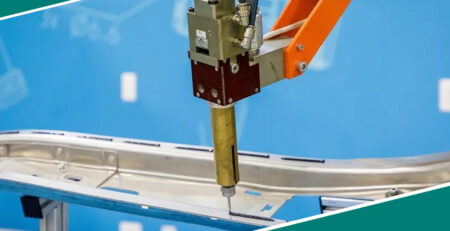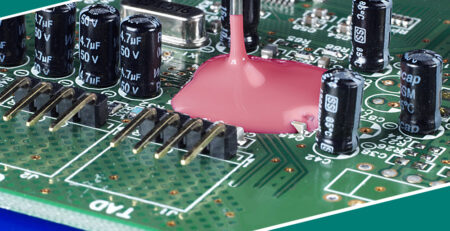Fire Protection Concept for Lithium-Ion Battery Systems
Fire Protection Concept for Lithium-Ion Battery Systems
Lithium-ion batteries (Li-ion) have become integral components in modern technology, ranging from electric vehicles (EVs) to renewable energy storage systems and consumer electronics. However, with the proliferation of these devices, safety concerns, particularly fire risks, have grown significantly. While efficient and powerful, lithium-ion batteries can pose significant fire hazards under certain conditions, such as overcharging, short circuits, or thermal runaway. Therefore, establishing a robust fire protection concept for lithium-ion battery systems is crucial to mitigate these risks, ensuring safety and reliability. This article explores various strategies, methods, and technologies involved in developing adequate fire protection for these critical energy storage systems.
Understanding the Fire Risks in Lithium-Ion Batteries
Before diving into fire protection strategies, it is essential to understand why lithium-ion batteries are prone to fire hazards. Key factors that contribute to the risk include:
- Thermal runaway:This occurs when the battery’s internal temperature rises uncontrollably, potentially leading to a violent release of heat, gas, and fire.
- Internal short circuits:These can cause a spike in current, generating excessive heat.
- External impacts or damage:Punctures, crushing, or other physical damage can cause internal shorts or leaks, which can result in fires.
- Overcharging and deep discharge: Overcharging and deep discharge can compromise the battery’s integrity, leading to swelling, leakage, or ignition.
Due to these factors, the fire protection concept for lithium-ion battery systems must be comprehensive and multi-layered.
Key Elements of a Fire Protection Concept
The fire protection strategy for lithium-ion batteries should be designed to prevent ignition, control fires if they do occur, and mitigate their impact. A successful concept incorporates the following key elements:
Battery Design and Chemistry Adjustments
- Improved thermal stability:The battery’s design can incorporate materials that resist overheating. Modern batteries often use flame retardants or safer electrolyte formulations to reduce the likelihood of fire.
- Cell-level safety features:Integrating safety mechanisms like pressure relief valves, fuses, or thermal shutdown devices can help minimize the fire risk at the battery cell level.
Fire Detection Systems
- Thermal sensors:These sensors monitor the battery pack’s temperature in real-time, triggering an alarm or shutting down the system when dangerous heat levels are detected.
- Gas sensors: Batteries at risk of thermal runaway release specific gases, such as hydrogen fluoride or carbon monoxide. Gas sensors can detect these early signs of thermal failure.
- Smoke detection:Advanced systems can incorporate smoke detectors that trigger an automatic safety response, such as cooling systems or power disconnection.
Active Cooling and Ventilation Systems
- Forced cooling systems: Active cooling through fans or liquid coolants helps regulate the temperature of lithium-ion batteries, especially in high-performance applications like EVs or energy storage systems. Keeping the battery temperature within optimal limits prevents the onset of thermal runaway.
- Heat dissipation designs:Effective battery management systems (BMS) are designed to optimize heat dissipation, spreading heat evenly across the battery pack.
- Ventilation channels:Proper airflow around the battery system can ensure heat is dissipated effectively, reducing the risk of localized hotspots.
Fire Suppression Mechanisms
- Sprinkler systems:If a fire is detected in large-scale battery storage facilities, automated sprinkler systems can be activated. These systems are typically equipped with specialized suppression agents for lithium-ion battery fires.
- Gas-based suppression systems:In confined spaces, inert gases like FM-200 or CO2 can suppress fires by reducing the oxygen levels around the burning cells.
- Foam suppression:Firefighting foams, often used for more extensive fires, can be adapted for battery fires. However, care must be taken to ensure the foam doesn’t negatively impact the battery or release toxic byproducts.
Fire Containment and Isolation
- Fire-resistant enclosures:Battery packs can be housed in fire-resistant enclosures, such as steel or composite boxes, that prevent the spread of flames to other components or surrounding areas.
- Compartments with independent cooling:In large-scale storage systems, each battery unit or compartment can be isolated to ensure that a fire in one section does not compromise the entire facility.
- Separation from other critical equipment:Keeping battery systems separated from other sensitive electronic components reduces the risk of cross-contamination during a fire incident.
Battery Management Systems (BMS)
- Voltage and temperature monitoring:The BMS is critical in preventing overcharging or overheating, which can lead to battery fires. Advanced BMS algorithms actively manage the charging and discharging cycles.
- Fault detection and diagnostics:A well-designed BMS can detect internal faults such as short circuits, thermal spikes, and imbalances in cell voltage, triggering corrective actions such as shutting down the system or disconnecting the battery.
- State-of-health monitoring:Ongoing monitoring of the battery’s state of health (SOH) enables early detection of degradation or failure modes that may increase fire risk.
Emergency Response and Firefighting Guidelines
- Training for emergency responders:Personnel involved in the operation, maintenance, and firefighting of lithium-ion batteries should be specifically trained to handle battery fires. It includes understanding the specific risks, firefighting techniques, and safe evacuation protocols.
- Firefighting equipment:Specialized fire extinguishers (Class D or lithium-ion-specific) should be available during a battery fire. Water-based extinguishers should be avoided since water can exacerbate the risk of an electric short.
- Incident management protocols:Clear protocols must be in place to manage fire incidents. It includes evacuation routes, notification systems, and coordination with local firefighting units familiar with lithium-ion battery fires.
Best Practices for Fire Protection in Lithium-Ion Battery Systems
Ensuring safety in lithium-ion battery systems requires following industry best practices. Some of these include:
Regular Inspections and Maintenance
- Perform routine checks on battery systems to ensure no external damage, wear, or leakage.
- Test cooling and ventilation systems regularly to verify that they are functioning optimally.
- Review and update fire detection and suppression systems to incorporate the latest technologies.
Battery Storage Guidelines
- Lithium-ion batteries should be stored in environments that minimize temperature fluctuations and physical impacts.
- Proper separation and fire-resistant barriers between battery systems and other flammable materials should be maintained.
Early Failure Detection
- Incorporate predictive analytics into the Battery Management System (BMS) to identify early signs of degradation that might lead to fire hazards.
- Use historical data from battery systems to inform better risk assessments and management strategies.
Collaboration with Fire Safety Experts
- Collaborate with fire safety experts and consult with local regulations to design a fire protection system tailored to specific applications (e.g., EVs, commercial storage).
- Engage with third-party testing laboratories for comprehensive safety assessments and certifications.
Conclusion
The increasing use of lithium-ion batteries in various applications calls for heightened attention to safety, particularly regarding fire protection. A well-designed fire protection concept for lithium-ion battery systems encompasses multiple strategies, including improved battery chemistry, fire detection technologies, active cooling, fire suppression mechanisms, and a robust battery management system. By proactively addressing the risks associated with lithium-ion batteries and implementing effective safety measures, industries can minimize the potential for catastrophic fires, ensuring the safe operation of these robust energy storage systems.
For more about a complete guide to the fire protection concept for lithium-ion battery systems, you can pay a visit to Deepmaterial at https://www.adhesivesmanufacturer.com/ for more info.














